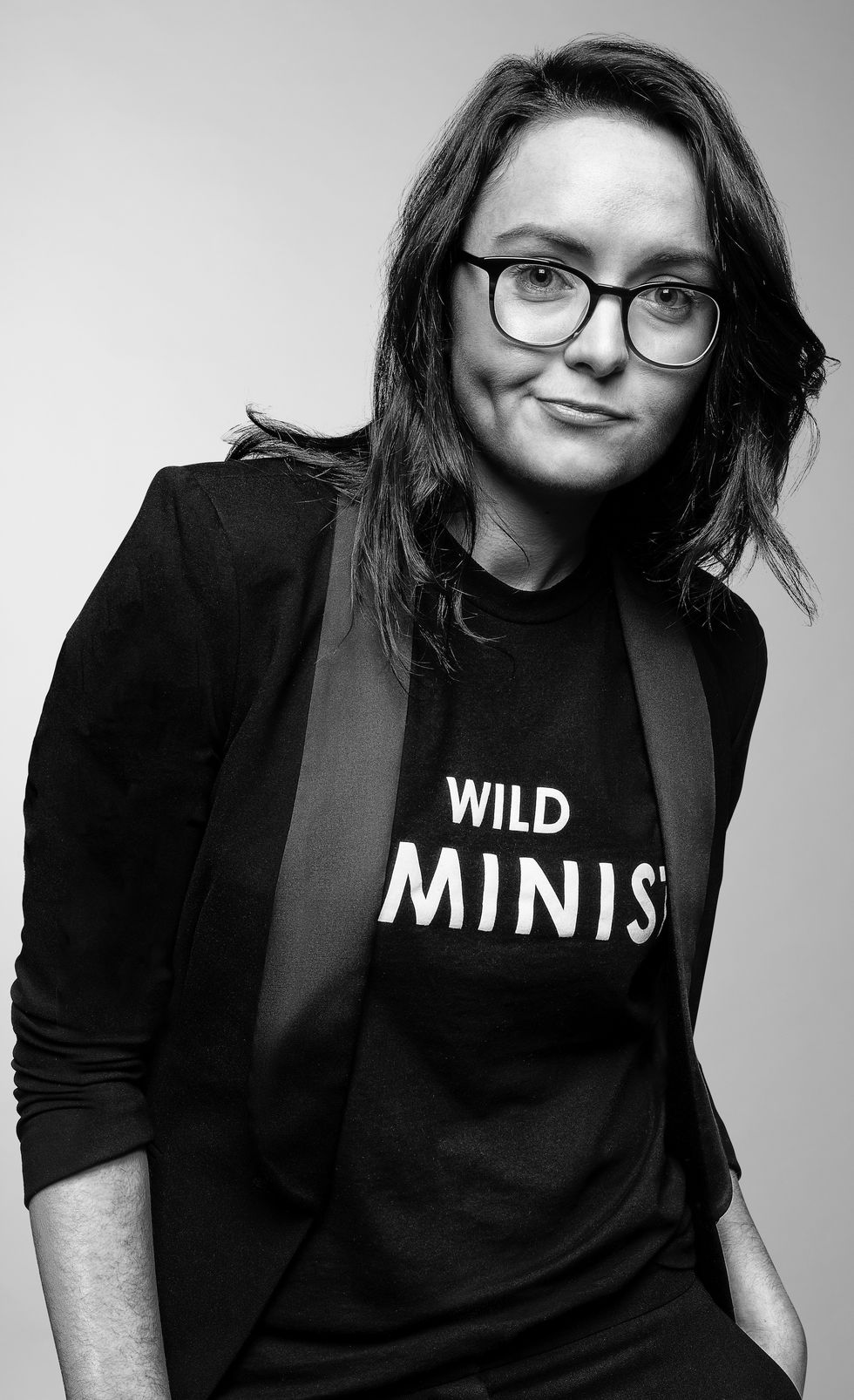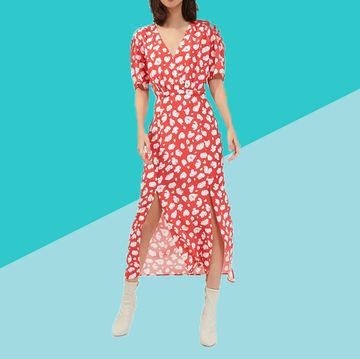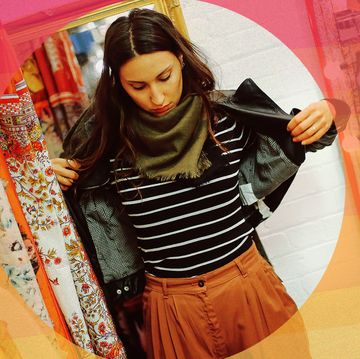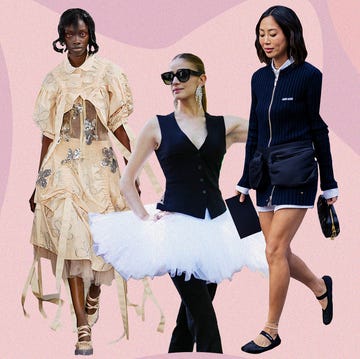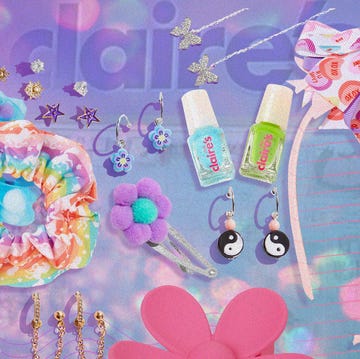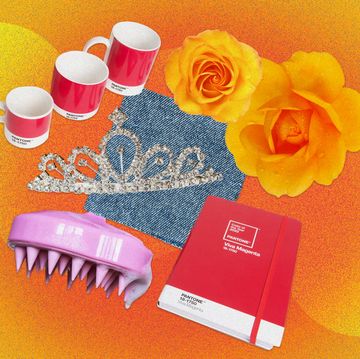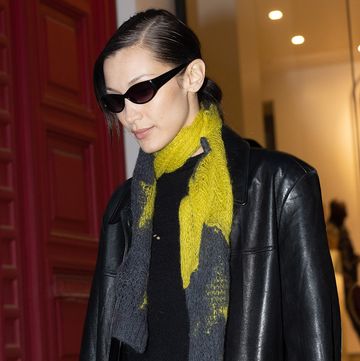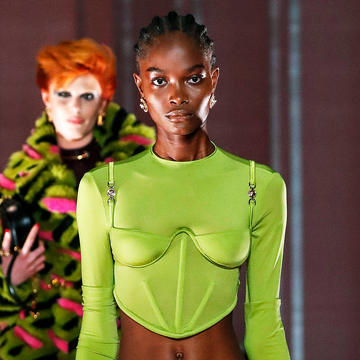Back in 2011, Emma Mcilroy, then working in Nike’s marketing department, was perusing the goods at Urban Outfitters with a friend, looking for graphic tees. “All of the ones in the women’s department had flowers, scooped necks. So, we looked in the men’s section. They didn’t fit. It was like, why is it they’re only offering women this kind? Can women not handle graphic tees?”
By 2013, she’d come up with a fix: Wildfang, an online clothing boutique created specifically to disrupt gender norms. For nonbinary people, butch women, and/or individuals who simply want to dress outside the typical “female” norm, Wildfang is a salve — a place to get blazers, button-ups, and tees that don’t put them in a binary box. Within a few years, Wildfang got so big, it opened stores in Portland, Oregon where she’s based, and Los Angeles; in May, Nordstrom announced a partnership with Wildfang to not only bring its clothing to Nordstrom stores, but to educate sales people about how to engage with customers on the trans/nonbinary spectrum.
“Nordstrom touches millions of people,” says Mcilroy, Wildfang’s CEO. “That is so powerful. That can change the whole industry. My parents told me I was crazy. I never wanted to be normal.”
But Mcilroy may very well be the new normal. As the mainstream population becomes more accepting of trans people (violence and policies against them notwithstanding) and boundary-pushers like Billy Porter and Harry Styles dissolve the lines between “men’s” and “women’s” clothing, the way people shop for clothes is starting to evolve. Up until very recently, shopping for clothes has been an experience that usually leaves nonbinary and trans people frustrated and disregarded. Though a few high-profile, high-end designers like Rick Owens and Marc Jacobs have long blurred gender lines with their clothing, the retail space has been slow to adapt.
Slowly but surely, though, retail is changing in ways to accommodate nonbinary customers, in turn making the experience of buying clothes a little more liberating for everybody.
“This is an exciting time,” says Annaliese Cherry, a stylist who specializes in helping nonbinary and trans clients shop and get dressed. “Nonbinary people are so unbelievably creative, and there’s getting to be a more expansive view of people beyond presenting as male or female.”
Say you want to buy a new sweater. More likely than not, you would do what people have done for hundreds of years: Go to a store — physical or digital — and begin looking for a sweater that flatters you and costs what you can afford. But before actually finding the garment, you’d almost certainly have to make a declaration about yourself by choosing between the men’s and women’s departments. If you are cisgender — a person whose gender identity corresponds with their birth sex — then this process is no big deal. But if you’re one of the roughly 1.2 million Americans who identify as nonbinary and feel neither of those options accurately defines you, buying a sweater suddenly becomes more complicated.
“As someone assumed to be a woman, it can feel weird to go into a section that is for a different gender than the one you’re perceived,” says AC Dumlao, a transgender nonbinary activist. “You’re getting weird looks from store associates and thinking, ‘Are they judging me?’ or maybe they’re assuming I’m shopping for someone else.”
Lots of people find clothes shopping a loathsome experience; it can be time-consuming, and it requires taking a cold, realistic look at our bodies to determine what’s going to work best for us at the moment. For people whose gender may not match their body type, however, shopping for clothes can be extra-difficult.
“You get bombarded every day [as a nonbinary person],” says Ser Anzoategui, a nonbinary performer, actor, writer, and producer perhaps best known for their work on the Starz show Vida. Particularly when Vida was on air (it ended with season three in 2020), Anzoategui was a standout on red carpets and events for their stylish, eye-catching outfits. But finding their style, or even outfits they enjoy wearing, didn’t come easy. “I have to feel really good to go shopping. I want to do my thing and get out. I don’t want to be stared at. I’m not white, and shoppers are not often used to seeing someone who looks like me. I’ll go undercover; I’ll wear shades. After so many years, it gets tiring.”
Both Anzoategui and Dumlao can recall painful or confusing experiences as kids, being forced to wear dresses and other traditionally female-identified clothing that made them feel awkward or uncomfortable. That’s unfortunate on its own, but doubly so for nonbinary people who actually love clothes, style, and fashion. Says Dumlao, “Wearing affirming clothing is so helpful for my mental health.” Dumlao says they do a lot of shopping at thrift stores, because secondhand shops often sort clothes in non-gendered ways (“pants,” “shorts”) and attract shoppers who, by definition, aren’t hung up on labels.
Cherry, the stylist, often recommends thrift stores and Etsy to her clients. When that’s not ideal, she helps with the traditional shopping process, which is usually about mitigating the anxiety and discomfort trans and nonbinary feel in stores. “I go into the dressing room with them so they’re not uncomfortable. Sometimes, salespeople say, ‘What are you doing here?’ or ‘That’s not going to look good on you.’ It’s not appropriate. My number-one thing is to ease the struggle.”
Even if you are, for example, a person in a biologically male body who wants to maybe rock a skirt like Jaden Smith or a blouse like Kanye famously did in 2010, you’d very likely find that the garments themselves don’t fit. It’s one thing to want to wear genderless clothes, but it’s sort of moot if you can’t get the dress over your hips, or the blouse is cut to accommodate breasts you don’t have. “That’s coming,” Wildfang’s Mcilroy says — speaking of her store and, perhaps prophetically, the industry in general. Dumlao says brands can do better in this regard by providing information about sizing — measurements of hips, chest, etc. — so that consumers can determine fit that way as opposed to gender.
These types of struggles are starting to ease somewhat, though, and one way is the most obvious: Designers can reach consumers through platforms like Instagram, not only eliminating the need for a brick-and-mortar store but allowing designers to target ideal customers. Nik Kacy is one such designer who started their own line of gender-neutral shoes.
“I love shoes, but I was constantly told I was in the wrong department,” Kacy says. You’d think that shoes like sneakers and boots would be free of gender confines, but no. Kacy, a trans masculine nonbinary queer person, knew they were born in the “wrong” body growing up, and by the time they got to choose clothing to express themself, they found that even shoes put constraints on them they didn’t like.
“When Doc Martens came out, I’d go to the men’s section, and they’d be too big. The person would say, ‘We have this in a woman’s size,’ and I’d get excited, and put it on; all of a sudden, my feet look smaller. Shoes are gendered to fall in line with a gendered optical idea, to make men’s feet look bigger.” Already hip to a movement of designers in New York, Los Angeles, and San Francisco, Kacy decided to launch their own footwear brand in 2013, Nik Kacy Footwear, that gives people more choice.
While some would like to see large corporates incorporate more choices into their offerings, big corporate brands can be the death of independent designers who’ve formed a community, which is part of the reason Kacy founded Equality Fashion Week. The festival gives other designers, as well as consumers, exposure to brands for and by trans and nonbinary people, which is crucial; it seems cutting edge now, but collaborations like Nordstrom and Wildfang suggest that major corporations see the (profitable) future and are getting in early. One thing’s for certain: No one’s going back. The successes of brands like Savage X Fenty, which revolutionized the lingerie/undergarments space by accommodating all body types and blurring gender lines, prove that change is coming — fast.
“Gen Z, the late millennials are the ones pushing this conversation,” Mcilroy says. “The younger generation is playing with styling — they don’t want the old rules; they just want to look and feel good.”
Malcolm Venable is a staff writer for Shondaland.
Get Shondaland directly in your inbox: SUBSCRIBE TODAY

